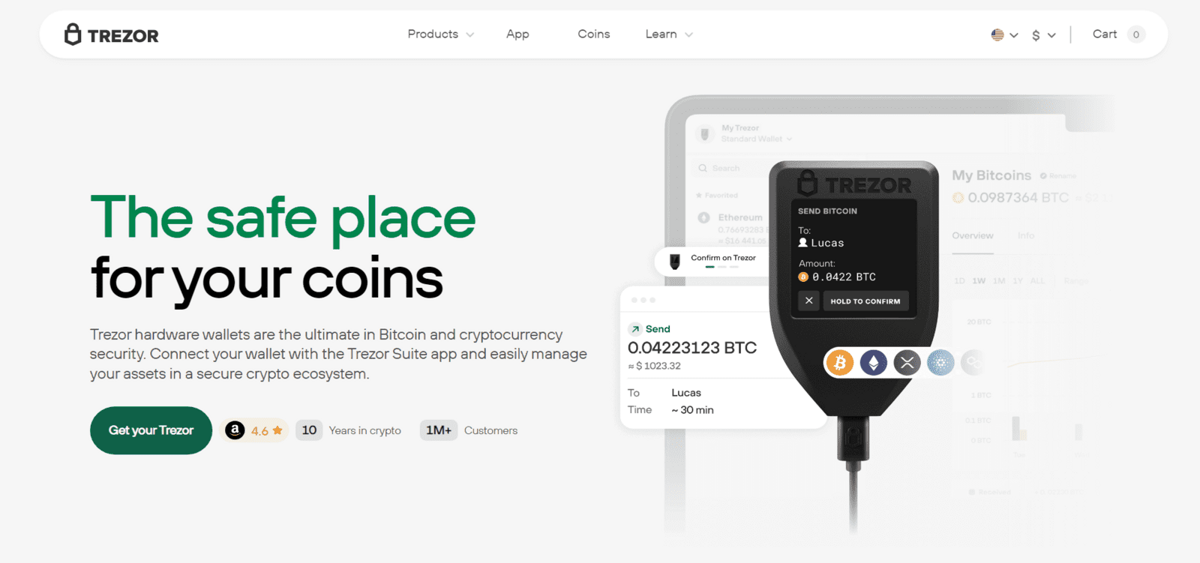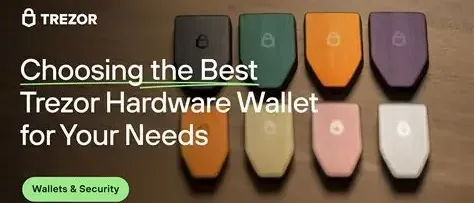Trezor Bridge | Connect Your Trezor Device to Your Browser

Trezor Bridge – A Modern Gateway Between Your Trezor Wallet and Your Browser
Trezor Bridge is a lightweight, secure communication tool designed to link your Trezor hardware wallet with your web browser. While the hardware wallet itself stores your private keys offline, the Bridge enables your device to interact with supported web applications without exposing sensitive information. It works silently in the background, allowing you to approve transactions, manage tokens, view balances, and adjust settings through the Trezor interface with confidence and ease.
At its core, Trezor Bridge acts as the translator between your computer and the digital world you access through the browser. Without it, your hardware wallet cannot communicate with websites or crypto platforms that rely on Trezor’s security infrastructure. Whether you are interacting with Trezor Suite, DeFi tools, or other compatible services, the Bridge ensures communication remains encrypted and uninterrupted.
Why Trezor Bridge Exists
Modern browsers have tightened their security models, often preventing direct USB communication between websites and external devices. While this is essential for protecting users from malicious scripts, it also limits legitimate interactions like hardware wallet management.
Trezor Bridge solves this problem by functioning as a secure layer that authorizes data exchange. It bypasses restrictive browser controls without compromising user safety. Since the Bridge operates locally on your computer, no external website gains unauthorized access to your hardware wallet. Every communication attempt must be approved by you on the Trezor device screen, ensuring full visibility and protection.
How Trezor Bridge Works
When installed, Trezor Bridge runs in the background and listens for requests from supported websites or applications:
- A website or app sends a request to communicate with your Trezor.
- The Bridge detects this request and connects with the Trezor device.
- The device physically displays required actions for you to confirm or reject.
- Approved actions are securely transmitted back through the Bridge and into your browser session.
Since the device itself signs all transactions and never exposes your private keys, the Bridge simply carries encrypted messages—nothing more. It does not store data, track activity, or interfere with your device’s behavior.
Key Features and Advantages
1. Secure Local Communication
The Bridge never sends sensitive information across the internet. All data transfers happen only within your computer, ensuring no one can intercept or read the messages being exchanged.
2. Fast Browser Integration
After installation, your browser immediately recognizes your Trezor device. There’s no need to install additional extensions or drivers.
3. Wide Compatibility
Trezor Bridge works on major operating systems, including:
- Windows
- macOS
- Linux
It supports chromium-based browsers, Firefox, and other web interfaces that connect through Trezor Suite or third-party platforms.
4. Auto-Updates for Maximum Security
Bridge versions update automatically to patch vulnerabilities, improve compatibility, and enhance performance. You never need to manually check for updates.
5. Smooth Interaction with Trezor Suite
For users working inside Trezor Suite Web, the Bridge is the essential component enabling your device to communicate with the browser session seamlessly.
Installing Trezor Bridge: A Step-by-Step Guide
Step 1: Download the Installer
Visit the official Trezor website on your computer and download the installer suited for your operating system. Ensure you are on the authentic website to avoid downloading compromised files.
Step 2: Run the Installation
Open the file and follow the on-screen instructions. The installation takes only a few seconds and requires minimal system resources.
Step 3: Connect Your Trezor Device
Plug your Trezor Model One or Model T into your computer using the official USB cable. The Bridge will immediately recognize the device.
Step 4: Open Trezor Suite or a Compatible Web App
Your browser should now automatically detect the hardware wallet. From here, you can manage crypto assets, confirm transactions, update firmware, or explore supported integrations.
Using Trezor Bridge with Trezor Suite
Trezor Suite Web is one of the most popular environments that utilize Bridge functionality. When you access Suite through your browser, Bridge enables:
- Secure login
- Access to your wallet portfolio
- Viewing token lists and balances
- Signing transactions
- Sending and receiving crypto
- Running security checks
- Managing device settings and firmware
Every action still requires approval on your hardware wallet, so even if your browser is compromised, attackers cannot move your funds.
Trezor Bridge and Decentralized Applications (dApps)
Many decentralized exchanges, staking platforms, and blockchain-based services rely on Trezor for secure authentication. With the Bridge installed, users can seamlessly interact with:
- Web3 platforms
- NFT marketplaces
- DeFi dashboards
- Token management interfaces
- Blockchain explorers requiring hardware confirmation
This eliminates the need to copy private keys or seed phrases into online forms. Instead, the Bridge establishes trust between your device and the application while you maintain full control.
Security Considerations and Best Practices
While Trezor Bridge itself is secure, your habits also play a key role in protecting your assets:
Always Install from Official Sources
Never download installers from random websites, forums, or advertisements.
Keep Bridge Updated
Automatic updates usually ensure the latest version is active, but you may verify periodically.
Verify Actions on Your Device
Treat every transaction prompt on your Trezor display as a final security checkpoint.
Avoid Public or Shared Computers
Using Trezor on unfamiliar systems can expose you to unnecessary risks.
Enable Additional Security Layers
Consider enabling passphrases or advanced protection modes on your device for extra security.
Troubleshooting Common Issues
Device Not Recognized
Try these steps:
- Reconnect the USB cable
- Restart the browser
- Reinstall Trezor Bridge
- Try another USB port
Browser Blocking Communication
Disable conflicting extensions temporarily (like privacy blockers).
Firmware Compatibility Warning
Update your Trezor device to the latest firmware version through Trezor Suite.
Why Trezor Bridge Remains an Essential Component
Even as browser technologies and security models evolve, Trezor Bridge continues to serve an important role in bridging offline hardware security with online crypto activity. It ensures that your hardware wallet remains usable and functional without sacrificing the principles of decentralization, personal custody, and cyber-resilience.
By simplifying device communication, the Bridge empowers both new and experienced users to interact with blockchain networks securely and efficiently. Its combination of transparency, reliability, and ease of use makes it a critical tool in the modern crypto ecosystem.
